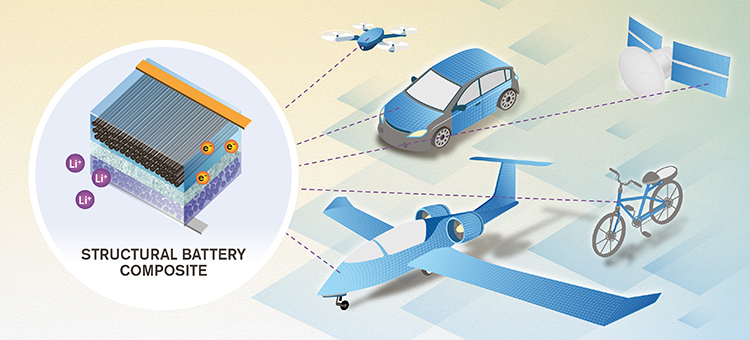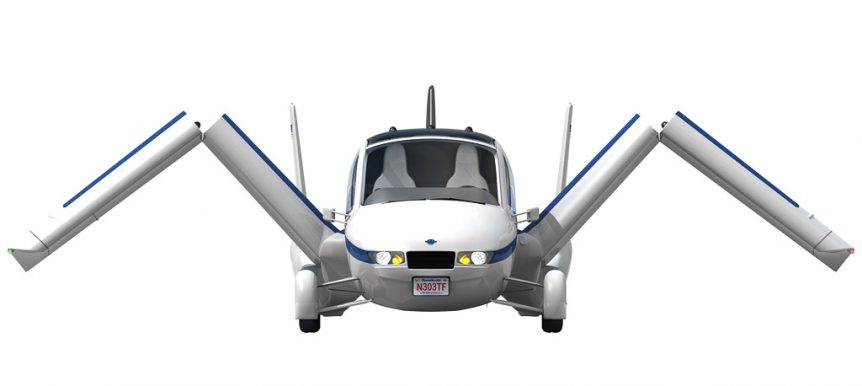Is it possible to combine the best features of batteries and supercapacitors to get both enduring energy storage and bursts of power? Batteries, to varying degrees can store energy and release it over time. Supercapacitors can provide instant, but short-lived power. Even more challenging, can can we form a hybrid structural battery, combining form with function? University of Central Florida researchers think they’ve answered those questions with a battery-supercapacitor hybrid material that could form “power suits” for electric vehicles. Improving on an Earlier Idea This blog first reported on structural batteries 12 years ago, examining the efforts of Volvo and Dr. Emile Greenhalgh of Imperial College London. Several approaches have been made to create a structural battery, but the “power suit” combines electrical potency with enough structural strength to resist driving impacts. UCF reports, “This new breakthrough continues this line of thinking, with scientists at University of Central Florida and NASA designing a new material featuring unique properties that allow for …
Group 14: The Next Battery Innovation?
Tina Casey, writing in Clean Technica, reflects on the coming changes in the “gasmobile” to EV ratio. “Somewhere in the outer reaches of talk radio, a ghost stalks the halls, mumbling of light bulbs and plastic bags and electric cars that won’t start in cold weather. Meanwhile, most automakers are not waiting around for the other shoe to drop. They have finally begun pivoting into the sparkling green world of zero emission personal mobility, even those once wedded to the idea of ‘clean diesel,’ and a new battery formula is here to help.” Her article, “Game Over For Gasmobiles: Electric Vehicle Batteries Just Keep On Getting Better,” describes efforts at Group 14, the second of two electric vehicle firms recently visited by Washington Governor Jay Inslee. The first was Eviation, based in Arlington. SCC55™ Group 14 is reputedly, “The largest manufacturer of lithium-silicon battery materials,” capable of producing 120 tons per year of SCC55™, its patented battery anode material. SCC55, …
Massless Batteries for Aircraft?
What if the weight of the batteries in an electric airplane could virtually disappear? Researchers at Chalmers University of Technology in Gothenburg, Sweden have come up with an improved structural battery that exceeds the results of earlier research. So-called “massless batteries,” although not as energy dense as cylindrical or pouch lithium-ion batteries, could be worthy substitutes. The idea of making airplanes from materials that would provide energy from their inherent properties has been of interest for years. Your editor wrote an article on “The Grand Unified Airplane” for Kitplanes magazine in 2013 based on the idea of combining solar power, piezoelectric flexing of wings, and structural batteries. The ultimate goal was to create a machine that would move through the air on the energy of flight itself. This might seem an unreachable fantasy, but material scientists are bringing us closer to the dream. Headlining their report with a rather non-academic boast, Chalmers University promotes its, “Big breakthrough for ’massless’ energy …
Geely Looks Skyward, Buys Terrafugia
Geely is a huge enterprise, and while not the largest maker of electric cars in China, sold 766,000 gas and electric vehicles in 2016, growing 50 percent over the previous year. Its profits grew 126 percent last year, primarily due to sports utility vehicle (SUV) sales. As EV Obsession reports: “The 351,861 electric car sales registered in China during 2016 represent approximately 46% of ALL plug-ins sold worldwide this year, with Chinese carmakers responsible for 43% of all EV production in 2016.” Geely, surprisingly, owns Lotus, Malaysia’s Proton Motors, the firm that makes London’s iconic taxis, and Volvo. Volvo just announced that all its cars will be electric or hybrid starting in 2019. Fortune reports that the company has become highly profitable, with 2016 net returns doubling to 5.1 billion yuan ($741 million), and possibly rising to 7 billion yuan in 2017. What is a successful company to do with all that money? The South China Morning Post reports on one …
Graphene 3D Lab’s Graphene Filaments Work Magic
Graphene 3D Lab, Inc. has demonstrated that graphene can be easily mixed with thermoplastics commonly used in fused deposition modeling (FDM) 3D printers. The company has demonstrated a mixture of plastics and graphene that can be turned into nanocomposite material filament which can then be used within any standard FDM 3D printer. They have managed to craft a functioning battery which may be incorporated into a 3D printed object during printing. These filaments show good thermal and electrical conductivity and are shown in the video forming a 3D printed battery. Different components require separate “printings” at present, but company CEO Dr. Daniel Stolyarov explains that future iterations of the process will be able to simultaneously produce multiple material parts. His corporate biography lists significant accomplishments. “In his previous role at Energetiq, Dr. Stolyarov and his team won the 2011 Prism Award for the Laser-Driven Light Source they developed. He has also co-authored papers with Nobel and Kavli prize winners, as well …
Whistling at High Frequencies in the Dark
The same millimeter wave-length scanning that sees through your clothes at TSA’s very personal pre-flight inspections in airports could also provide a new type of heads-up display for pilots. With an ability to distinguish power lines and other finely-resolved images in otherwise total visual blackouts, the technology could find a place in navigation, searches, and even private flying. A few drawbacks stand in the way, however. Extremely high frequency MMW devices sense objects at a range just below that of the lowest frequency infrared light. The high frequency allows a high level of discrimination in imaging. Used in automobiles for applications such as radar braking and adaptive cruise control, the potential for adapting such devices to weather flying is promising. Used today in military helicopters, it is highly useful in places like Afghanistan, where blackouts of Biblical proportions darken mountain passes at incredibly high density altitudes. Operation Eagle Claw, the 1979 rescue attempt of 400 American prisoners in Iran was …




